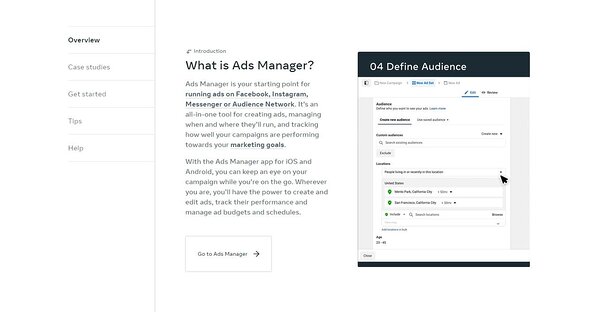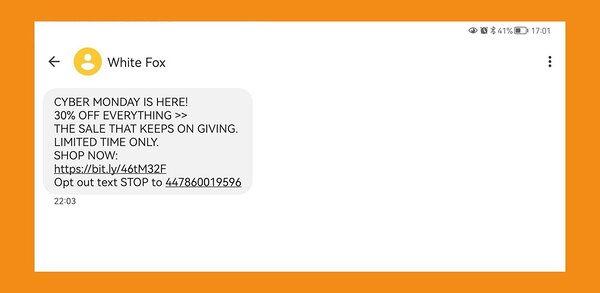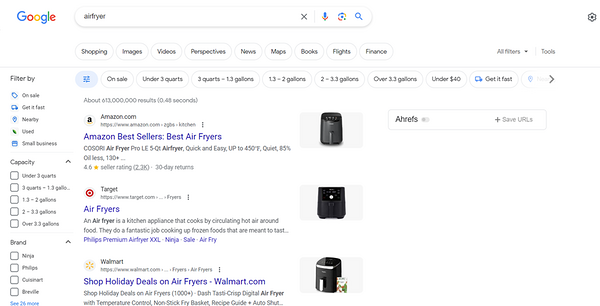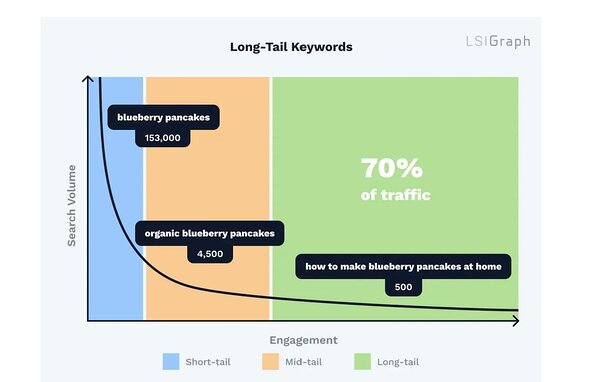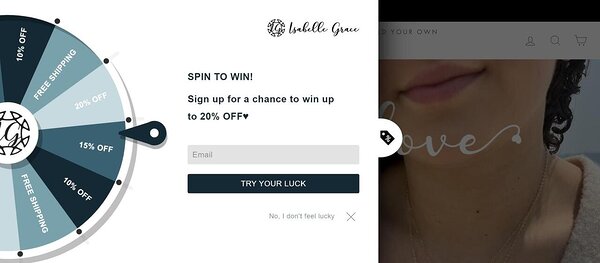You might offer the best products in the world, but that's not enough to start shifting your inventory. Whether you're a small-scale, niche-specific online seller or aspire to become the next Amazon, you need a reliable and effective way of spreading the word about your eCommerce brand and what you have to offer potential customers.
A carefully planned and executed eCommerce advertising strategy, complete with powerful and consistent messaging, will grab the attention of your target audience and tempt them to buy from your online store.
This article explores eight ways to create buzz around your eCommerce business in 2025, taking into account the latest marketing trends. First up, though...
What is eCommerce advertising?
eCommerce advertising refers to the methods and channels you use to promote your eCommerce store and products. It falls under the umbrella of an eCommerce marketing strategy, a broader concept geared around goals like building brand awareness, increasing sales and improving customer retention.
The two terms often overlap and get mixed up. The key difference between them is that eCommerce advertising is about the distribution of marketing messaging through digital and offline channels.
How much does eCommerce advertising cost?
There's no definitive answer to this question (frustratingly), as it varies by channel and the type of advertising you're running. Each channel offers different pricing models. For example, paid search engine ads offer a pay-per-click pricing structure, which can be anything from a few cents to hundreds of dollars, depending on your target keywords.
Eight essential eCommerce advertising strategies
In this article, we'll cover online eCommerce advertising methods that will help you reach a national or global audience. (Offline advertising is more localised.)
1. Social media advertising
Popular eCommerce marketing tactics include directly engaging with people on social media platforms like Facebook and Instagram, selling products directly via these channels – and using paid advertising to drive traffic away from social media and onto an eCommerce site.
With paid ads, you can experiment with different social post advert formats, such as images, videos, carousels and collections. Which you choose depends on your marketing goal and the product(s) you're selling.
Key steps involved in setting up a social media ad campaign:
1. Define your objectives – what are you advertising and why? Your ads must have a specific purpose and be measurable so you can see whether your campaign has performed well.
2. Specify your target audience – who is your ideal customer? Get to know the behaviours and interests of your target audience and select demographics to match.
3. Set your budget – the cost for your ad will be dependent on audience reach and ad duration.
4. Craft a compelling ad – explain your offer clearly so viewers can easily decide whether they're interested or not. Include strong, relevant imagery and a direct call-to-action to tell people what you want them to do next.
5. Carry out A/B testing – it's rare to create a perfect ad the first time around. Tweak your ad, one variable at a time, to see which version achieves the best results.
7. Choose your timings carefully – especially if you offer seasonal products or want to retarget visitors to your eCommerce store.
8. Measure performance – once your social media ad has run its course, revisit your objective and use key metrics to determine whether your ad was successful.
2. Influencer marketing
Influencer marketing involves collaborating with popular social media users who have a following of people likely to be interested in your products. Influencers can be categorised according to the number of followers they have:
Nano-influencers (1K-10K followers).
Micro-influencers (10K-100K followers).
Macro-influencers (100K-1M followers).
Celebrity influencers (1M+ followers).
As you can imagine, working with macro and celebrity influencers is very costly. However, you can achieve great results when you collaborate with a micro or nano influencer. These are much more affordable and may better suit your business if you offer niche products.
When choosing an influencer, research their authenticity and authority on various platforms. Also, check audience demographics and engagement stats to ensure your campaign will reach the right people who are most likely to respond.
The tricky part is making your campaign seem authentic and organic without hiding the fact that you're paying the influencer for their partnership. Try to choose an influencer who will benefit from your products and use them anyway, even if they aren't getting paid for their content.
3. SMS advertisement campaigns
According to Gartner, SMS has one of the best open and response rates of all the messaging channels available today. Text message advertising lends itself well to flash sale promotions, new product launches, and a whole host of exclusive discounts, special offers, deals, and bundles. It's a direct and cost-effective way to reach customers and prospective buyers. With Messente's service, for instance, it costs approximately €0.020 per message to send a text to the United States. Check more SMS prices.
Personalise your SMS campaigns for the best results. Use data insights to anticipate the content or offers that different customer groups will resonate with and address each recipient by name in your message copy. You can do that easily by using a bulk SMS provider that pulls information from your customer database across into your campaigns (check that the provider has a good delivery rate record). You just have to ensure that the SMS provider you use has the essential bulk SMS features.
If you also operate a brick-and-mortar store, you could use geo-targeting for SMS. This enables you to look up the location of nearby SMS subscribers and send them personalised offers to entice them to pop into your store.
For example, if you sell consumable beauty products, you could send out a campaign locally with a special offer – you might catch someone when they need to restock.
Hi Katie, running low on HIGH-SHINE hair shampoo? It's your lucky day! Buy two products and get a third free – today only. Here's how to find us: [URL]
Note that there are communication and data protection laws relating to promotional SMS messages. The most important rule is that you can only text subscribers who have given explicit consent to receive promotions via SMS. Be cautious of timings too - in some countries, you're not allowed to send such messages before 8am and after 9am (as SMS marketing is classed as a type of phone-based solicitation).
4. Affiliate marketing
Affiliate marketing is where an affiliate partner promotes a product they like online. The partner earns a commission every time someone purchases the product through their affiliate link. An affiliate is often a content publisher, such as a blogger or influencer, but it can also be a review website or a Pay-Per-Click (PPC) media buyer – or even another company with which you set up a partnership.
A text link embedded within editorial copy on a website or e-newsletter.
A link included within a social media post or advert.
A visual display advert with the affiliate link behind it.
A product carousel, with each product having its own affiliate link.
When interested visitors click on the text link or display ad, they're directed to the product within your eCommerce store, where they can choose to buy it. The affiliate link works alongside a tracking solution that captures click and conversion metrics. It generates reports showing sales and commission data for each affiliate in your programme.
Affiliate marketing is cost-effective, provided there's enough profit margin in your products to give away a commission (usually a percentage of the sales value). Setting up an affiliate programme with an affiliate platform like ShareaSale or AWIN is typically free. But you will have to pay the platform a small fee for every sale on top of the commission paid out to affiliate partners.
5. Search engine ads
The most common search engine ads, such as Google Ads or Bing Ads, work on a PPC basis, meaning you bid for keywords or phrases relevant to what you're selling online. When a web visitor searches for your chosen keyword or phrase, the search engine uses a complex algorithm to decide what ads to show. You'll be charged a fee if your ad is clicked on.
Uku Tomikas, Messente's CEO, explains the pros and cons of PPC search engine ads: "If done right, they can generate a lot of traffic and sales for your store. But you must choose the right keywords and craft a strong advert that encourages visitors to click. You also need to really nail the targeting and ensure the ad reaches your ideal customer. (This also involves selecting negative keywords that you don't want to target.)"
PPC ad spend can be very costly if you get into a bidding war with competitors over keywords. These types of ads are also subject to bad practices – a competitor may click on them to generate fake traffic and rack up your advertising costs.
One way to advertise on search engines for free is to optimise your product pages so they look great in Google shopping ads (see screenshot).
6. Email campaigns
Email marketing is an effective and cheap online advertising method for eCommerce businesses. Two of the best tools for eCommerce are Mailchimp and Drip. Mailchimp is very simple to use and has built-in audience segmentation and automation capabilities. Meanwhile, Drip comes with a pre-built marketing series for eCommerce behaviours. It integrates with Shopify, BigCommerce and WooCommerce so you can target customers at every stage of their buyer journey.
Both will allow you to send automated abandoned cart notifications and drip campaigns to nurture prospective buyers and existing customers. Drip campaigns involve sending a slow and steady stream of emails (prewritten and scheduled) based on customer actions. An example of a drip email campaign flow is:
Email 1 – welcome email for new subscribers with a 10% discount on their first purchase.
Email 2 – (3 days later) a showcase of your bestselling products and a reminder about the 10% discount.
Email 3 – (3 days after email 2) a collection of current deals and a reminder about the discount.
For customers who make a purchase after emails 1, 2 or 3, another flow of cross-selling emails could be triggered based on their past purchase history. As with SMS, you'll need subscriber consent before you can send them promotional emails.
7. SEO
Search engine optimisation (SEO) involves improving your online store to make it more visible to search engines. The idea is that when people type in the name of your products or ask questions about them, your store listings or information pages will appear. The higher your eCommerce website ranks in search engine results, the more traffic you'll get.
Including relevant short and long-tail keywords in your product descriptions and other content is essential to SEO. (Long-tail keywords are strings of words that people might enter into search engines when trying to find products like yours).
Commercial and transactional intent keyword phrases include words like 'buy', 'discount', and 'near me'. These are highly valuable because they indicate the searcher is almost at the point of purchase.
Other SEO considerations
One of the latest SEO trends is optimising your website for voice searches. This means selecting long-tail keywords that are entered into voice assistants (typically questions and conversational keywords that reflect how people speak when doing a voice search).
If you target a specific region, research local keywords with the name of your town or area. Finally – an absolute must – prioritise mobile-friendliness. This helps with SEO and also the overall customer experience since many searches and purchases are made using mobile devices.
8. Other display ads
An effective eCommerce advertising strategy should also include native, interactive display or programmatic ad formats. Let's break these down:
Native ads – these are ads that don't look like ads. They blend into other content, which makes them appear more natural to the viewer. For this reason, they can be incredibly effective.
Programmatic advertising – the use of powerful algorithmic software to buy digital ads that target the right people in the right places.
Interactive display ads – these invite consumers to engage. Good examples include spin-the-wheel games and polls. Such ads are pretty intrusive, so make yours appealing and offer something of value to customers.
eCommerce marketing tips and best practices
The most successful eCommerce advertising strategies are omnichannel or multichannel, where several channels are used simultaneously to reach customers. Such strategies are also heavily focused on audience segmentation and personalisation for the best possible targeting and dynamic remarketing. Here are some other best practices and tips to help you get maximum value from your campaigns:
Perfect your ad copy – customise it according to each platform and channel you use. Incorporate strong CTAs, and remember to A/B test.
Adopt a mobile-first approach – keep mobile users in mind for all advertising formats. Consider how your ads will display on all device screens.
Utilise modern tech – investing in the right software will save time and resources, and streamline your advertising campaigns.
Be compliant – be aware of the regulations and laws you must follow when contacting your audience for marketing purposes.
Watch your budget – advertising costs can spiral if you don't keep an eye on them (especially with PPC ads). Track your spend regularly.
Continually measure advertising performance – this is vital to ensure a good ROI. Cover every aspect from audience insights and engagement to advert clicks and conversions. Also, track the number of people unsubscribing from your email and SMS list. If there's a spike in unsubscribes, it could mean your campaigns aren't hitting the mark.
Drive online sales with effective eCommerce advertising
A strong and consistent advertising strategy will help build brand awareness and attract new and existing customers to your store. It should include digital channels such as social media, SMS and email marketing, influencer collaborations, search engine ads, SEO and other display or banner ads.
Whatever platforms and channels you choose, make your eCommerce ads personalised, relevant and mobile-friendly. Bear in mind the marketing rule of seven, which suggests consumers must see your message or advert at least seven times before they take action. (Give your campaigns time to work.) Evaluate advertising campaigns using key metrics such as click-through rate, conversion rate and customer lifetime value. Finally, test and tweak your ads as needed.
Related reading: learn how to set up an integrated marketing campaign.

